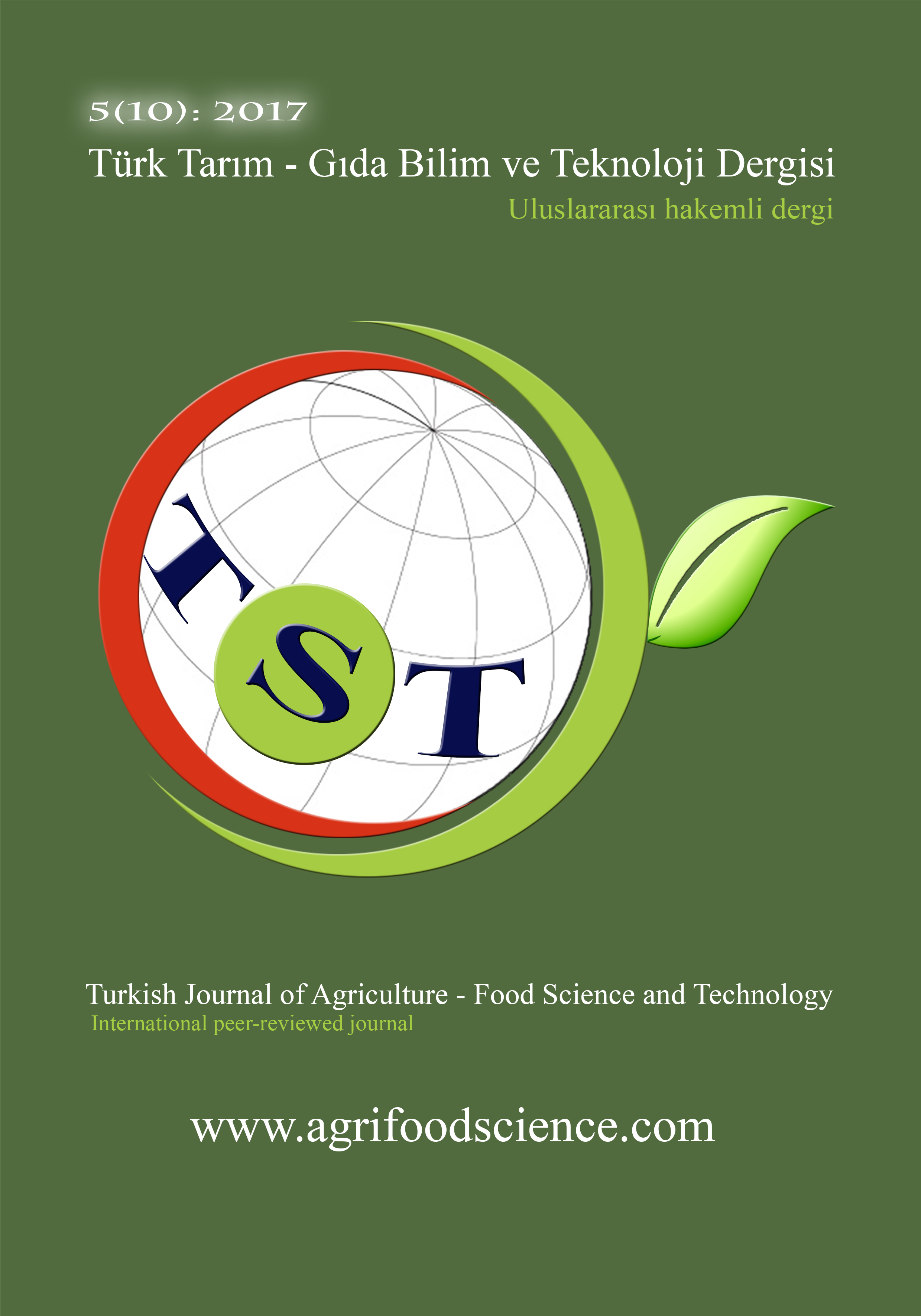Quality Assessment of Honey Sourced from Natural and Artificial Apiaries in Ekiti State, Nigeria.
DOI:
https://doi.org/10.24925/turjaf.v5i10.1125-1129.991Keywords:
Honey, physicochemical, mineral composition, organolepticAbstract
Honey samples were obtained from wild and domesticated sources and analyzed for some physicochemical properties such as color, pH, moisture content, ash content, refractive index, specific gravity, total solid, viscosity, glucose and fructose content following Standard Association of Official Analytical Chemistry. The following range of values for pH (3.55-4.20), moisture content (18.50-25.60%), soluble solids (74.10-81.20%), ash content (0.08-0.14%), specific gravity (1.38-1.47), refractive index (81.3-83.4%), fructose content (40.5-63.04%) and glucose content (19.35-32.34%). The mineral composition analyzed revealed potassium to be the dominant mineral in the honey samples followed by Calcium. However, Cadmium and lead where not detected in the honey samples. The results indicated that parameters such as pH, moisture content, ash content, specific gravity, sugar (majorly fructose and glucose content), fructose/glucose ratio, glucose/water ratio conform within the limit of the international standard for honey. However, moisture contents of the wild honey samples (22.05% and 25.60%) were a little higher than the Codex Standards of ≤ 21%. In conclusion, the honey samples investigated have the needed quality criteria and are good for human consumption. The results also revealed excellent organoleptic acceptability of the honey samples, hence are suitable for human uses.Downloads
Published
02.10.2017
How to Cite
Dele, O. S. (2017). Quality Assessment of Honey Sourced from Natural and Artificial Apiaries in Ekiti State, Nigeria. Turkish Journal of Agriculture - Food Science and Technology, 5(10), 1125–1129. https://doi.org/10.24925/turjaf.v5i10.1125-1129.991
Issue
Section
Food Technologies
License
This work is licensed under a Creative Commons Attribution-NonCommercial 4.0 International License.









